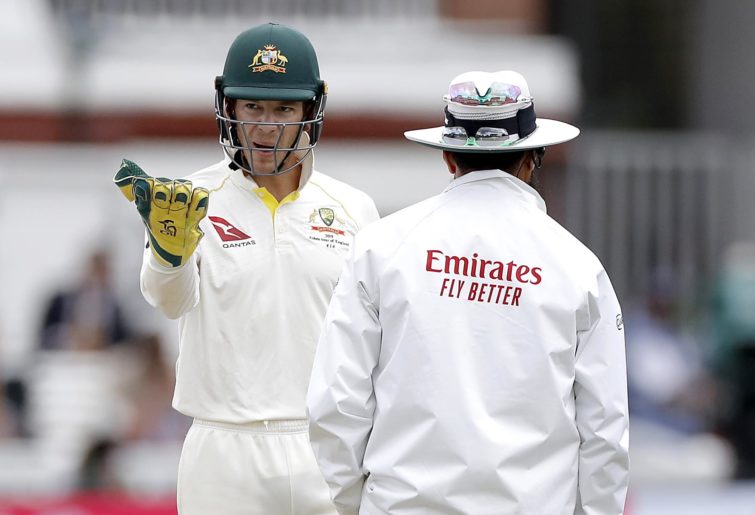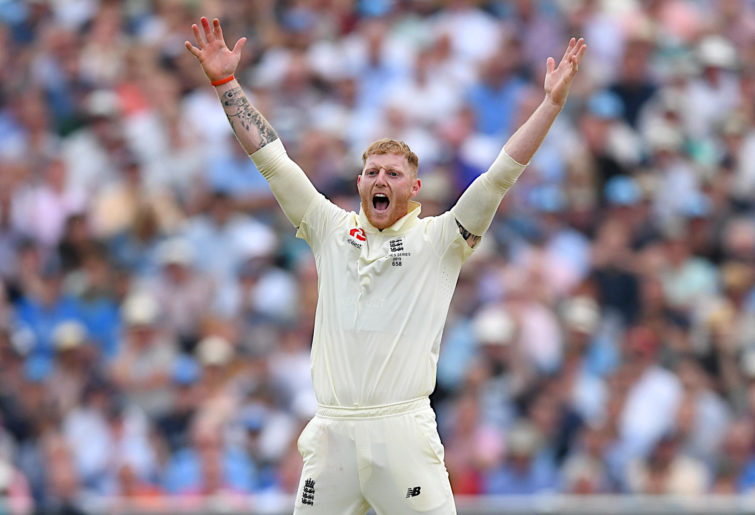DRS was supposed to rid the game of the so-called ‘howler’ and it hasn’t done that.
We still get vital Test matches decided by howlers, such as Horrible Headingly a year ago. We can blame the players until the cows come home for using DRS speculatively, or even pure gambling with it, but I don’t believe that solves the imperfections in the system either because human nature gives rise to desperateness.
The teams that futilely burn reviews are almost always the one under the hammer in any given match. For example, we can say that an umpiring howler cost us at Edgbaston 2005 and DRS would have overturned it, but that is making a rather loose assumption that we would still have had a review left in any case.
At the end of the day, Test matches on an individual level (let alone, potentially, the result of a whole series) should never hinge on which side is more astute at challenging the umpire’s decision. Players should just play and umpire’s umpire; words spoken by Richie Benaud in an interview at the end of the victorious 1958-59 Ashes series.
I could ask why it is that we have three different systems of technology referrals for different modes of dismissal, but I won’t. I will merely briefly outline what those three different systems are before moving on to the main proposal that I want to put forward in respect to LBWs:
1. For run-outs and stumpings, the umpire has the option of referring the decision upstairs. They almost always do this even when the verdict is blatantly obvious to the untrained eye. In this case, the on-field umpire doesn’t have to make any decision whatsoever – they have the full prerogative to completely pass the buck upstairs.
2. For catches, when the issue is whether the ball has been caught cleanly or not (rather than whether or not the batsman has hit the ball) the umpire has no such prerogative. Rather, they’re required to stick their neck out somewhat by making a so-called ‘soft’ decision before reverting to the option of sending it upstairs.
3. For LBWs (as well as catches where the issue is contact with bat rather than carry to the fieldsman) the umpire has to make a complete decision. Either the batsman is given out or the fielding captain can appeal the decision to the higher authority upstairs. This depends on which way the on-field decision went.
With this third system, I have four major problems with it. Firstly, it has not worked in ridding the game of howlers. Secondly, kids watch their heroes on TV legally challenge the decision-maker in authority. When they’re successful it adds to the obnoxious perception that the umpire is always wrong.
Thirdly, I have never understood why it should make a difference whether a review is successful or not in terms of how many subsequent ones are available to a team. I think a team should get a capped number – whether successful or not.

(Ryan Pierse/Getty Images)
Finally, the umpire’s call epitomises the very inconsistency that DRS should surely be stamping out. Where is the fairness in an umpire ruling not out to an LBW shout, the fielding side reviewing, and it is shown to be clipping the outside of the top of leg stump so it stays not out, but then when their opponents bat, the decision is out, and the exact same scenario but it stays out.
I detest the idea that one batsman on one team gets to stay, while a counterpart on the opposition has to go based on what the original decision was in what was, at best, a line-ball call. At worst it was an umpire not concentrating enough to realise that there were, in both cases and using only the naked eye, enough doubts for the batsman at the wicket to benefit from.
I’m an umpire myself and I don’t consider saying not out with the naked eye to a ball that ball-tracking subsequently deems was hitting flush right at the top of leg stump to be a howler. If this technology was available in games I adjudicate, I would have no problem with such technology respectfully overturning my decision in the interests of fair play or natural justice (assuming it is 99.9997321% accurate).
The first part of my reform to the LBW part of DRS would be to abolish umpire’s call altogether. The decision on a percentage of the ball hitting a percentage of the relevant off-stump/leg stump/the bails and then everything that falls within that percentage is out, with the remainder not out. Depending on how reliable and accurate ball tracking is deemed to be, the aforementioned percentage may well be set at 100.
The second thing I would do is abolish the on-field challenge by players and have the third umpire review every LBW appeal and this will become clearer shortly.
The third and final thing I would do is alter the order in which LBW criteria is looked at (by the video umpire that is, not the on-field umpire making the initial decision). Currently, they look at the potential for a no-ball, followed by potential contact with the bat (whether before or after first contact with batsman’s person), followed by where the ball pitches, followed by whether the batsman was struck in line with the two sets of stumps, and then finally whether or not the ball would have hit the stumps had the ball not been intercepted by the batsman’s person.
How many people reading this have ever actually stopped to ask why the video umpire looks at things in this order? The answer is two-fold and it overlaps: this is, firstly, the order in which events occur. Secondly, this order is the way umpires without technology assistance are trained to assess the merits of an LBW appeal (with the naked eye in the split second or so in which events actually unfold).
This may sound totally obvious when spoken out loud but from the perspective of the umpire making the decision, a standard beginner’s umpiring coaching manual might say something along the lines of “too many inexperienced umpires ask themselves that last question first” (would the ball have hit the stumps?) with the inference being that the previous events have the potential to be quickly lost in the mind.
However, who’s to say that computer technology has to look at things in the same order that they occur, let alone the same order that the human brain processes things? Of those five LBW criteria outlined two paragraphs before now, three of them – where the ball pitches, whether struck inline or not, and whether the ball is hitting stumps or not – are literally ascertained in barely a split second, so why not do these three things first when using the technology?
So, let’s cut to the chase – here is my proposal.
There is an LBW appeal and the on-field umpire gives a decision. The video umpire immediately goes to ball tracking. If the on-field decision was not out, then ball-tracking can be completed before a spinner off a short run fully returns to their mark.
If at this point any of the three criteria covered by ball-tracking vindicate the on-field not-out decision, then the players simply get on with the game, the on-field umpire having received a covert signal from upstairs. As stated, this will happen within literally a second or two.

(Photo by Gareth Copley/Getty Images)
If, however, all three LBW criteria covered by ball-tracking are in contradiction to the on-field umpire’s decision, then the game pauses and they check for hotspot and legality of delivery. If it’s a fast bowler or medium-pacer, these last two criteria will also be pretty much completed by the time the bowler reaches their mark for the following delivery.
Given that well under 50 per cent of bowlers operate off run-ups of only a few paces, and 60 per cent of LBW criteria can be looked at in a split second, hold-ups to the game will be minimal.
If the on-field decision is out, then all five LBW criteria can be ascertained long before the batsman has left the field of play, and the incoming batsman can be trained upon reaching the international level to wait near the perimeter and not step onto the field of play to legally begin his or her innings until the on-field decision has been officially ratified upstairs.
My proposed system does not undermine the on-field umpires or make them obsolete at all. Think of the on-field umpire as the parliament, and the upstairs third umpire using video technology as the senate.
What happens if either the members of the parliament or the senate don’t do their jobs competently? They get voted out by the people.
Who are the metaphorical people electing the metaphorical parliament and senate in an international cricket match? The selection committee that appoints all umpires to such matches, of course.
Even our good friend Shane from Ipswich would say, “it’s elementary, my dear Watson.”






























































































